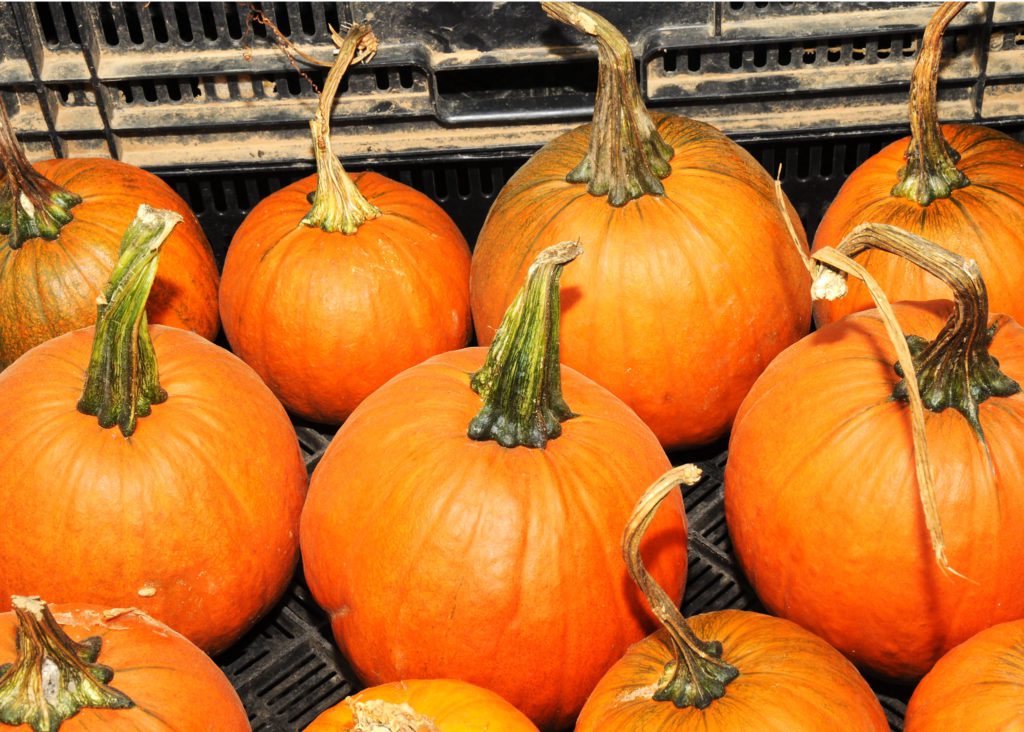Oct 15, 2021Value of Texas pumpkin production surpassed other states at $25.9M in 2020
Pumpkin production is widely dispersed throughout the United States, with crop conditions varying greatly by region. All states produce some pumpkins, but six states produce most of them.
In 2017, about 40%t of pumpkin acres were harvested in the top six pumpkin producing states, measured by pumpkin weight (2017 U.S. Census of Agriculture, USDA, National Agricultural Statistics Service [NASS]). Every year, USDA surveys top pumpkin-producing states and publishes the data the following year.
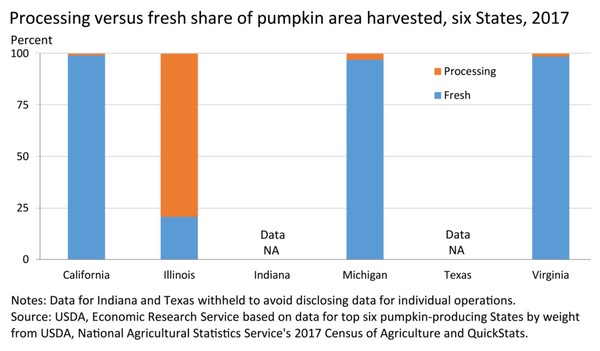

In 2020, Illinois increased its acreage and leading position, harvesting more than twice as many pumpkin acres as any of the other top States, at 15,900 acres. In the same year – California, Indiana, Michigan, Texas, and Virginia – each harvested between 3,700 and 6,000 acres (all pumpkin data for Texas in 2019 is unavailable from NASS to avoid disclosing data for individual operations. Data from other years show that Texas is an important pumpkin-producing State).
Illinois harvests the largest share of pumpkin acreage among all States and an even larger share of processing acres. The most recent available data indicates that almost 80% of pumpkin acres in Illinois are devoted to varieties destined for pie filling or other processing uses, compared with about 3%in Michigan and even less in California and Virginia. This difference in the type of pumpkin most commonly grown in Illinois helps explain differences in yield and price between Illinois and other top States.
Yields vary substantially among States and over years within a State, depending on pumpkin varieties and growing conditions. On average, Illinois grows about 40,000 pounds per acre (predominantly Pie varieties for processing into products like pumpkin puree), California and Texas each grow about 30,000 pounds per acre – and Indiana, Michigan, and Virginia each grow about 20,000 pounds per acre. Yield can vary each year – from as much as 8,500 pounds in the case of both Illinois and Texas from 2018 to 2019 – to as little as 1,000 pounds in the case of Michigan from 2019 to 2020.
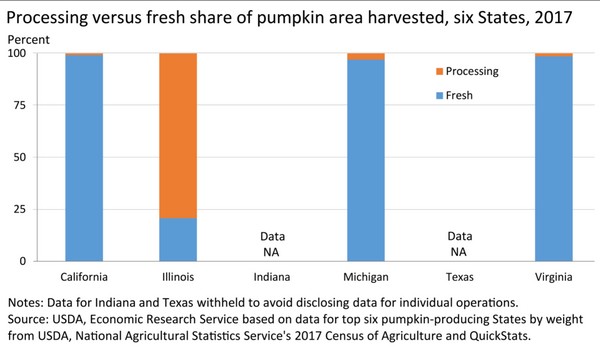

In 2020, farmers in the top 6 pumpkin-producing States harvested more than 1 billion pounds of pumpkins combined. Leading in acreage and yield, Illinois produced 564 million pounds in 2020, as much as the other top 5 most productive States combined. California, Indiana, Texas, and Virginia each produced about 100 million pounds of pumpkins – while Michigan produced about 90 million pounds. Of these States, Indiana had the lowest yield and Michigan had the second-lowest, slightly ahead of Indiana.
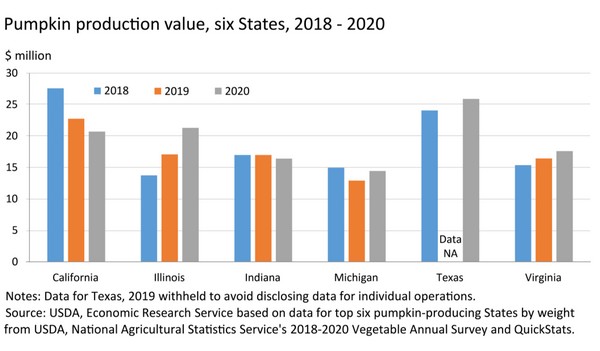

Annual U.S. per capita availability of fresh pumpkins averaged about 6 pounds over 2018 to 2020, similar to levels during the late 1990s. Per capita availability of fresh pumpkins was consistently at 4 to 5 pounds from 2000 to 2014. Beginning in 2016, fresh pumpkin per capita availability increased to more than 6 pounds. Reduced pumpkin availability in 2015 corresponded to a drop in domestic production, due in large part to the effects of poor weather on Illinois production.
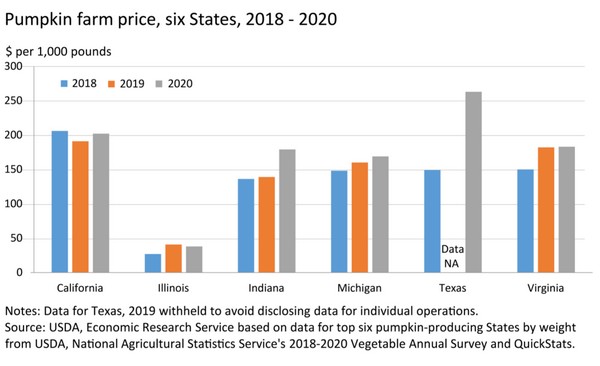

All States see year-to-year changes in the price of pumpkin received by growers. Until 2020 (when Texas received $263 per 1,000 pounds), California received the highest price for its pumpkins. averaging about $200. Dry weather in Texas that led to higher quality and lower yield, coupled strong wholesale demand, contributed to the high prices. Other States (like Indiana, Michigan, and Virginia) received prices ranging from about $136 per 1,000 pounds to $183. Illinois growers sell their pumpkins mainly for processing, and those types of pumpkins are priced lower than jack-o’-lantern pumpkins. This means that Illinois producers consistently received the lowest price – ranging from about $30 to $40 per 1,000 pounds on average.
At $25.9 million in 2020, the value of pumpkin production in Texas surpassed that of all other top States, including Illinois and California. With consistent increases in Illinois from 2018-2020 and consistent decreases in California, the Illinois value of production of $21.3 million in 2020 exceeded California’s by $0.6 million. Indiana, Michigan, and Virginia have maintained a fairly stable value of pumpkin production from 2018 to 2020, each averaging between $14 and $17 million over the three years.
Pumpkin supplies from most States are targeted toward the seasonal fresh market for ornamental uses and home processing. Pie varieties are predominantly sold in the processing market, although some are sold to consumers in retail outlets.
Growers mainly produce jack-o’-lantern type pumpkins (Howden), but demand for specialty pumpkins – like White Howden, Blue, Cinderella, and Fairytale –continues to expand as consumers look for new and interesting varieties. Opening the season, wholesale prices range from $130 per 24-inch bin for pie pumpkins, to $150 for Howden pumpkins, and up to $300 for specialty varieties like White Howden pumpkins. At $5.17 per jack-o’-lantern type pumpkin (Howden) in the second week of September 2021, retail prices are up 7% from the same time last year.
– USDA, National Agricultural Statistics Service


